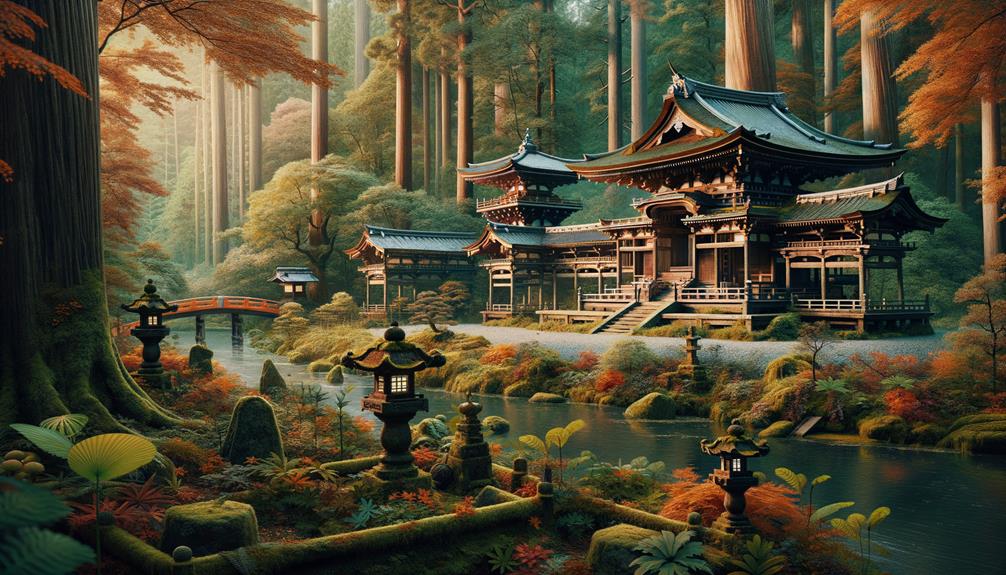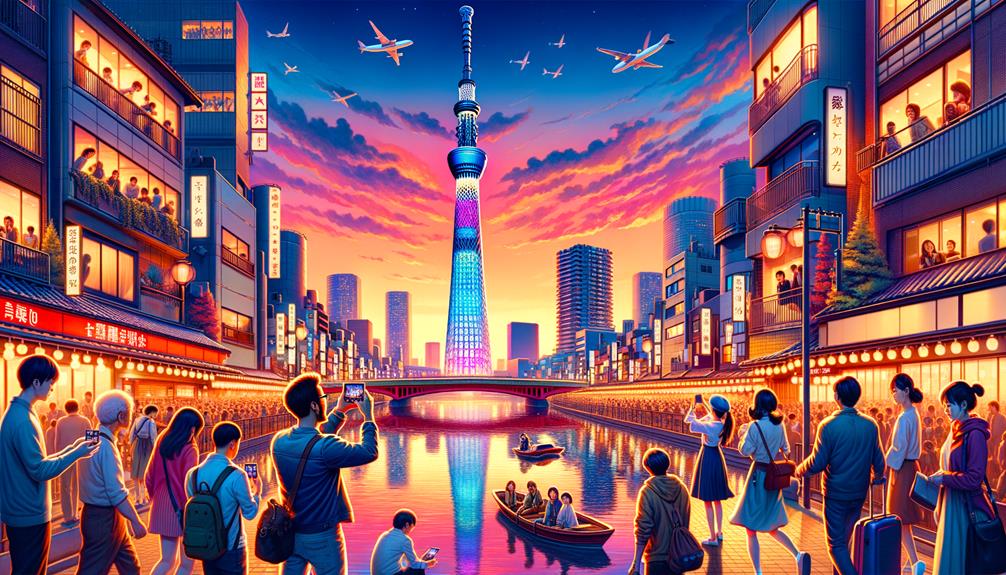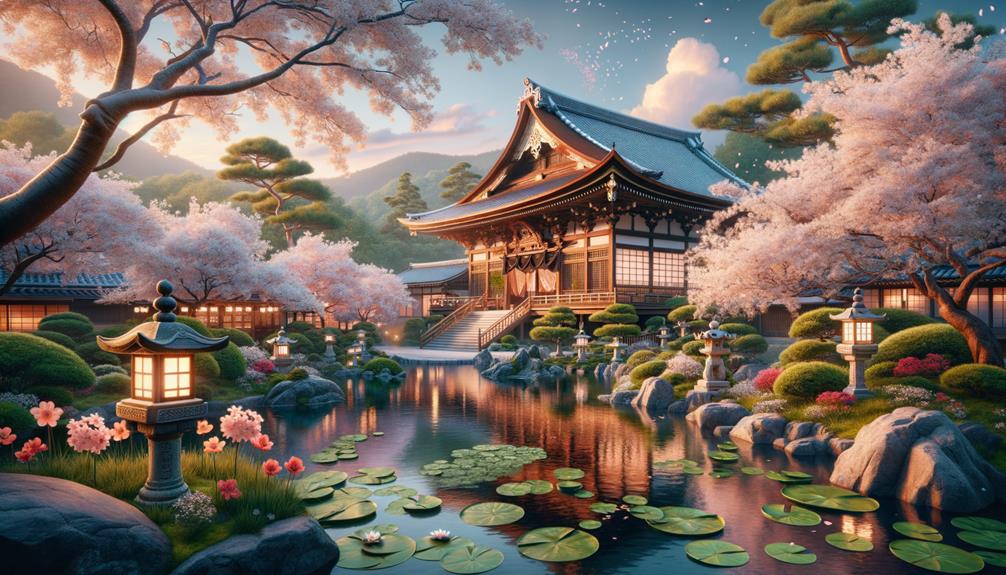Walking through the towering cedar trees leading to Nikko's entrance, the air felt thick with centuries of history and spirituality. The vibrant reds and golds of the Toshogu Shrine's intricate carvings seemed to glow in the filtered sunlight, each detail showcasing the craftsmanship of a bygone era. It's fascinating how this site blends Shinto and Buddhist elements, creating a unique cultural tapestry. The preservation efforts here are impressive, keeping these treasures as awe-inspiring as they were in the 17th century. Ever wondered what stories these ancient walls could tell?
Architectural Marvels
When you first see the architectural wonders of Nikko's UNESCO World Heritage site, the detailed designs and careful craftsmanship of the 103 religious buildings are truly breathtaking. As you wander through the shrines and temples, the brilliant architecture reflecting centuries of dedication and artistry is impossible to miss. Each structure, mostly dating back to the 17th century, tells a story through its elaborate carvings, vibrant colors, and meticulous details.
The shrines and temples are thoughtfully arranged on the mountain slopes, blending harmoniously with the natural surroundings. This placement not only enhances their visual impact but also evokes a sense of peace and reverence. Rooted in the Edo period, the architectural style has influenced countless designs throughout Japan, showcasing the timeless appeal of these masterpieces.
Walking among these historical buildings, I felt a deep connection to the past and the enduring spirit of Japanese craftsmanship. The way the architecture seamlessly integrates with nature is a testament to the country's respect for both its cultural heritage and natural beauty. Nikko's shrines and temples stand as lasting symbols of Japan's rich architectural legacy.
Cultural Significance
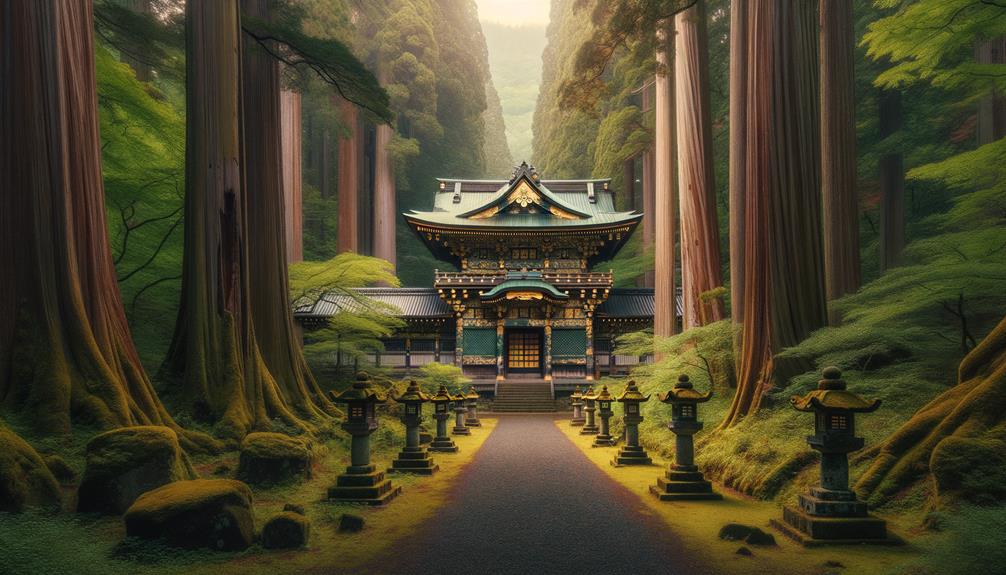
Nestled in the tranquil beauty of Nikko, the rich cultural significance of its UNESCO World Heritage sites is vividly apparent through the blend of Shinto and Buddhist traditions. Walking through the historic grounds of Toshogu Shrine and Rinnoji Temple, you can truly feel the deep sense of history and spirituality that these places hold. Toshogu Shrine, the resting place of Tokugawa Ieyasu, is a testament to Japan's cultural richness. Its grand architecture and intricate craftsmanship are not just visually impressive but also reflect the artistic peak of the Edo period.
The mix of Shinto and Buddhist elements is visible everywhere, from the ornate carvings of mythical creatures to the peaceful sanctuaries meant for meditation. Rinnoji Temple, with its strong Buddhist roots, complements the Shinto practices at Toshogu Shrine, creating a balanced harmony that has drawn visitors for centuries. These sites, home to numerous national treasures and key Cultural Properties, highlight Nikko's historical importance as a spiritual and cultural center.
Through ongoing conservation efforts, cultural events, and educational programs, the legacy of Nikko's UNESCO World Heritage sites continues to inspire and educate future generations.
Key Attractions
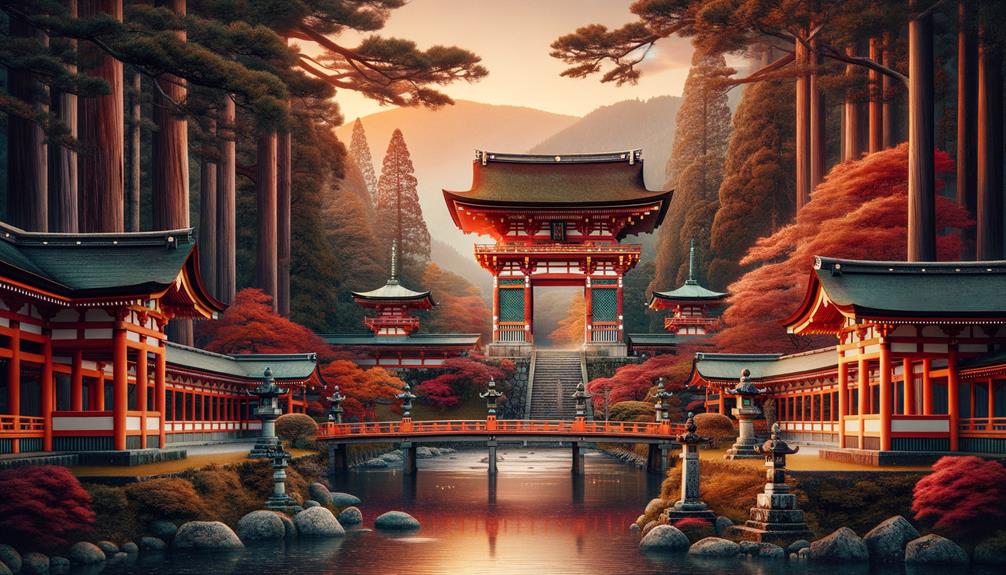
Venturing into the key attractions of Nikko offers a rich blend of history and stunning architecture. The Nikko Toshogu Shrine, adorned with detailed carvings, is a true testament to the skill of its creators. Among its many captivating features, the sleeping cat and the three monkeys stand out, knowing that an impressive 127,000 craftsmen contributed to this masterpiece.
At the Futarasan-jinja Shrine, established in 782, I strolled along peaceful mountain trails connecting the various temple buildings. This shrine is dedicated to three mountain deities. The haunted bakedoro lantern adds an air of mystery, believed to change shape when lit at night and showing marks from samurai sword strikes.
Rinnoji Temple, dating back to the 8th century, offers a serene atmosphere with its priceless artifacts and gold-lacquered statues. The calm Japanese garden and the three Kannon deities add to the spiritual vibe.
Crossing the Shinkyo Bridge feels like stepping into a painting. Known as one of Japan's top three bridges, its red-lacquered arch spans 28 meters, surrounded by lush greenery.
Here's a quick overview:
| Attraction | Established | Highlights |
|---|---|---|
| Toshogu Shrine | 17th century | Intricate carvings, 127,000 craftsmen |
| Futarasan-jinja | 782 | Mountain paths, haunted lantern |
| Rinnoji Temple | 8th century | Gold-lacquered statues, Japanese garden |
Preservation Efforts

Maintaining the charm and historical value of Nikko's key landmarks takes a lot of effort and dedication. Each of the 103 historic buildings, which include 9 national treasures and 94 important Cultural Properties, needs detailed attention. Restoration work here sticks to the original designs and methods, ensuring that every shrine and temple stays true to its origins.
Teamwork is central to these preservation efforts. By partnering with UNESCO and various conservation groups, we balance welcoming tourists and protecting this priceless heritage. These collaborations help us keep an eye on environmental impacts and run educational programs that highlight the importance of conservation.
Financial and technical support is crucial. The Agency for Cultural Affairs, Tochigi Prefecture, and Nikko City provide the resources needed to maintain these sacred sites. Their help allows us to complete necessary restoration projects and keep Nikko's cultural history alive for future generations.
Every action we take in preserving Nikko shows our dedication to protecting its historical treasures while letting its stories inspire freedom and wonder for all visitors.
Visitor Experience
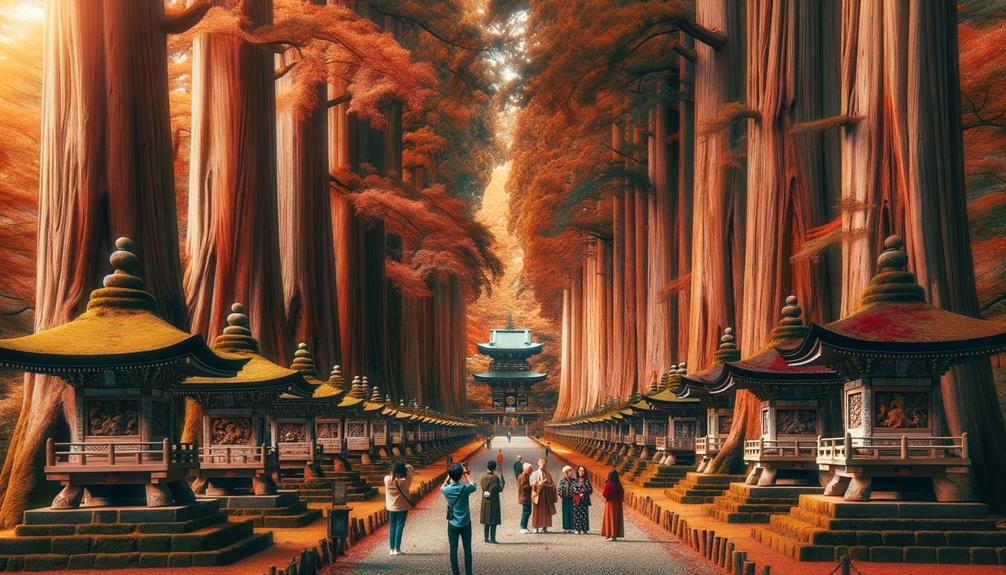
When you visit the Nikko UNESCO World Heritage Site, you're stepping into a world where Shinto and Buddhist traditions come alive against a backdrop of stunning natural beauty. The site features 103 historic buildings that showcase Japan's spiritual and architectural past. As you wander through these sacred grounds, the detailed carvings and gilded structures tell stories of dedication and skilled craftsmanship.
Nikko National Park, with its serene landscapes, adds to the experience. In spring, cherry blossoms paint the area in shades of pink, and in autumn, the trees turn into a vibrant display of reds and oranges. It's a sensory delight and a peaceful retreat for anyone looking to escape the hustle and bustle.
Throughout the year, cultural events and festivals bring these ancient traditions to life. Traditional performances and educational programs offer deeper insights into the significance of each site, making your visit even more meaningful. Ongoing conservation efforts ensure that these treasures will be preserved for future generations. In Nikko, every step takes you through history, providing an unforgettable experience.
Frequently Asked Questions
Why Is Nikko a World Heritage Site?
Nikko is a UNESCO World Heritage site because its temples and shrines stand out beautifully on the mountain slopes, blending impressive architecture with nature. The place is a striking reflection of centuries-old religious traditions and Edo period craftsmanship.

